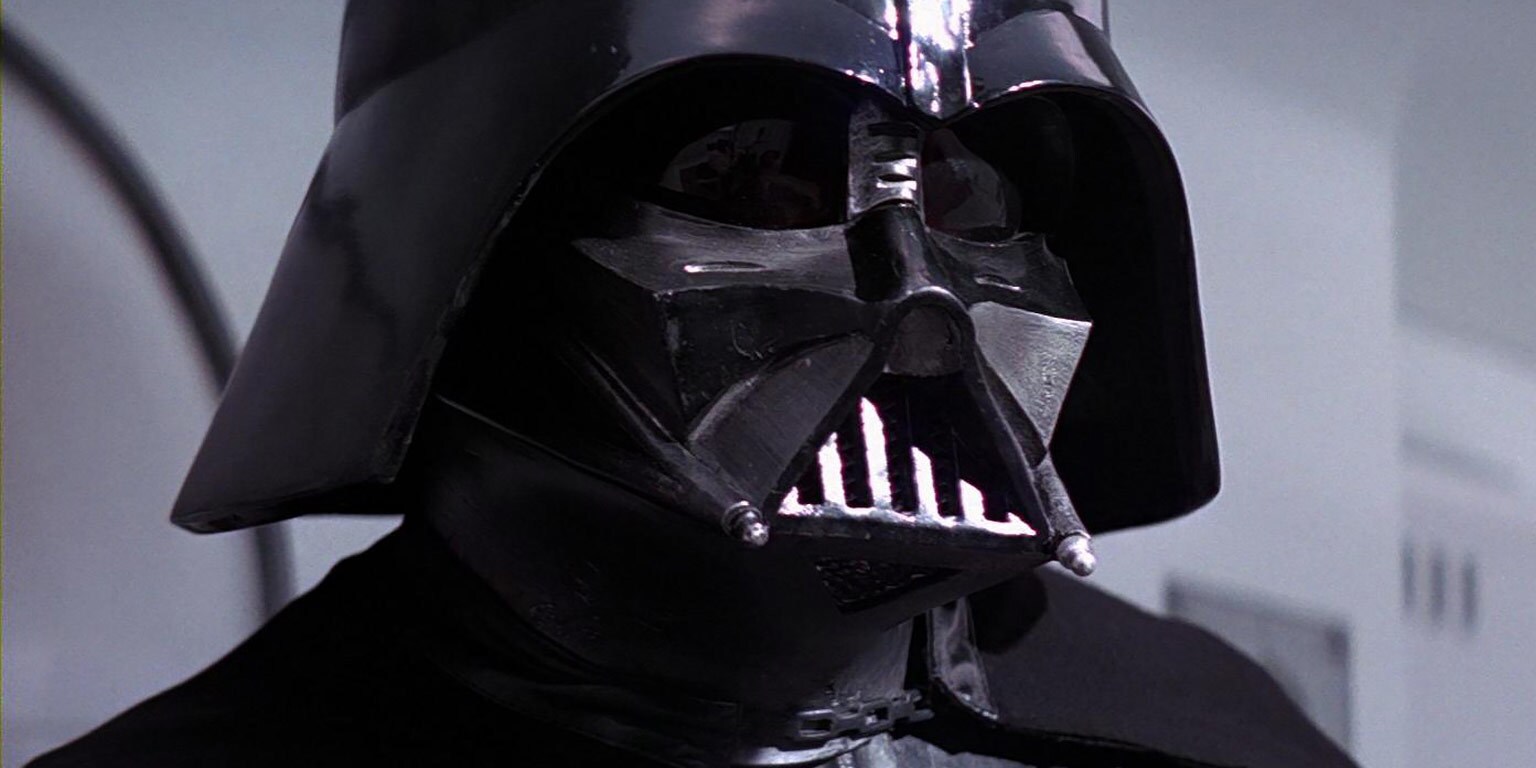Films has many unforgettable characters, but more often than not, it is the villains who leave a lasting impression even after the movie ends. They usually attract our attention with their twisted pasts and interesting characters. An antagonist can make or break a movie, just like in Slots Capital no deposit bonus, if the opponent is boring it can make the whole experience worse. Now, let’s move on to their backgrounds and find out how they become so attractive to the audience.
- Darth Vader – Star Wars Saga
Anakin Skywalker, aka Darth Vader from the Star Wars saga, is a story of tragedy and redemption that resonates deeply with many people. Once upon a time, he was a promising Jedi Knight who would bring balance to the Force.
Join the PERA (Personal Entertainment Research Assistant) waitlist.
The World's Most Indispensable Movie App
The RunPee app tells you the best times to
run & pee during a movie
so you don't miss the best scenes.
Download the RunPee app.
100% free (donation supported)
Nevertheless, his path took a different turn when driven by fear of loss and Emperor Palpatine’s manipulations. What changes into Darth Vader has perpetually been a recall of how fright and manipulation can lead to a terrible ending (The Empire Strikes Back). Besides Darth being himself, there is still Anakin Skywalker; this further enriches his personality and makes his story an examination of human nature that is rather intriguing.
- Hannibal Lecter – The Silence of the Lambs
Dr. Hannibal Lecter in “The Silence of the Lambs” personifies the two sides of man: civilized and savage at once.
What people are saying
about the RunPee app.
September 23, 2023
This app is the best wingman for a movie goer, especially when you have to go. It even has a vibrating timer that is spot on for those 'go times' some of us need! There are many other features that are wonderful. It even lets you know when the kill scenes are coming up for the people and animals for those who may have sensitivities to that type of content. The staff go above and beyond!
View all reviews
Apple App Store | Google Play Store
Download RunPee app
Lecter is a former psychiatrist turned cannibal serial killer known for his high intelligence, cultured manners, and bizarre habits. On one side, he had such an awful childhood full of violence and death, but on the other side, he has always been talented, which makes him both weird as well as terrifying (Red Dragon). In terms of morality and justice, Lecter distinguishes himself from all other movie characters, having taken on big questions.
- The Joker – The Dark Knight
In “The Dark Knight,” Joker stands for complete chaos without rules. As for him, his background remains enigmatic, making him an unknown menace to Gotham City. Thus, he questions the morality of Batman, a hero, and makes society consider whether it is following these rules.
However, what makes Joker even more dangerous is not only his erratic violence but also his psychological mind games that reveal how cunning he is. He wants everything to be destroyed around him, which makes him fascinating in a very disturbing way.
- Nurse Ratched – One Flew Over the Cuckoo’s Nest
Nurse Ratched in “One Flew over the Cuckoo’s Nest” is the epitome of subdued villainy. She does this by always looking cold and calculating as she maintains perfect control.
This shows how oppressive institutions operate where her authority is psychological rather than physical. A closed, calculating face betrays her power-hungry character, a nursing Sister with an icy, calculating demeanor hiding a deep-seated need for power and authority over patients.
As a nurse, she challenges who has the final say and who wields it over others, making her one of most effective villains ever seen on screen.
- Norman Bates – Psycho
Norman Bates is an example of mental horror in Alfred Hitchcock’s “Psycho.” It is also sad to frightening because the mother-son relationship he has with his mother is complicated and damaged, while Norman suffers from severe dissociative identity disorder.
On top of that, Norman was subject to a lot of emotional abuse and manipulation in his past, which resulted in fragmented personality states due to the multiple personality disorder he has suffered since then. This disturbing aspect of Norman’s mind makes it discomforting when watching such movies, making it outshine any other psychological film.
- Lord Voldemort – Harry Potter Series
Lord Voldemort, first introduced as Tom Riddle in the Harry Potter series, signifies a classic example of how a troubled childhood can destroy someone’s soul and turn him into a wicked dictator.
Fear of death and lovelessness left him thirsting for immortality, as well as all the witches you fellow wizards dominated by him today. Raised in a muggle orphanage after being deserted as a baby, he was neglected during his childhood by his parents, who never cared about him when growing up too.
The emptiness made him want to build strength so that he could be non-vulnerable, getting away from all things scary about existence.
Thus, a gifted young wizard metamorphoses into the malevolent dark ruler Voldemort, providing an understated examination of how fear and control can corrupt, contributing to our understanding of what defines wickedness.
- Anton Chigurh – No Country for Old Men
Anton Chigurh is a figure in the film “No Country for Old Men” whose character represents the inevitability of fate. His empty and systematic way of killing, combined with his unique set of principles outlined by the coin toss, only succeed in portraying his role as one of irreversibility.
Also, he has a past shrouded in mystery, which adds to his portrayal as an immovable force of nature. This makes him an exceptionally intriguing and terrifying character in modern cinema because he challenges conventional ideas of justice and morality. Thus, a certain mystique about him keeps audiences on their toes, ensuring he leaves an indelible mark in the film.
- The Wicked Witch of the West – The Wizard of Oz
The Wicked Witch of the West is not your usual villain whose motivation is pure evil; she keeps chasing Dorothy because she wants control and power related to magical ruby slippers. However, her background is never revealed much in the movie.
Still, subsequent adaptations and literature often give more details about her character, showing that she was often just misunderstood due to circumstances beyond her control. This additional context turns her from a one-dimensional antagonist into a complex character, enriching the narrative and inviting audiences.
To reevaluate their perceptions of villainy. Variations in her character show how necessary it is to understand what drives people to what may be perceived as wicked acts; thus, she becomes less one-sidedly negative, which offers more insights into her intentions and hardships.
9 Commodus – Gladiator
Commodus depicts a deeply jealous man stricken with insecurity who craves social validation, which makes him a perfect example for anyone observing such behavior around them.
His strained relationship with his father, Emperor Marcus Aurelius, and burning envy towards Maximus, the protagonist of this film, are major reasons behind his madness gaining power. That is what happened to Commodus, who had absolute power but was destroyed by his insecurities.
He gradually transforms from a son seeking approval into a tyrannical ruler, showing how personal weaknesses, including brutality, can be used to control and dominate others. Through his character development, we learn that misuse of power, envy, and insecurity ruin lives.
- Amon Goeth – Schindler’s List
Amon Goeth, in the film ‘Schindler’s List’, is the true embodiment of absolute evil. The concentration camp Plaszow, under his leadership during World War II, presented a terrible picture of Jewish suffering.
In Auschwitz, the Płaszów Concentration Camp gave an example of human beings’ worst display of unnecessary cruelty resulting from misplaced bias. Goeth, like other such figures, does not only represent evil personified but also symbolizes whatever can happen to humanity if hate and power are uncontrollable. That is how he perpetually reminds one about humanity’s dark side of humanity thus inciting them to learn to avoid it next time.
Conclusion: Psychological Depths Of Villainy
These villains may have different personalities, but all appear to be conditioned by their environment experiences, or choices that they make. These are more than simple distractions because they shed more light on a villain’s intricate psychological and emotional structure.
These different tales about them, however push you deeper into some dark areas within human nature, starting from Voldemort, whose wickedness resulted from trauma and fear, to Norman Bates, haunted by past abuses.
As such, their characterizations are more resonant and richer when viewed against these backstories. It also means that being a bad guy doesn’t just occur spontaneously; instead, it combines environmental factors at work.
Through this, this exploration of cinema’s most famous villains not only amuses us but also instructs us, giving us an extended perspective on what evil is and who we as humans are. With your new found perspective on a lot of famous movie villians you should stop reading and start watching!






